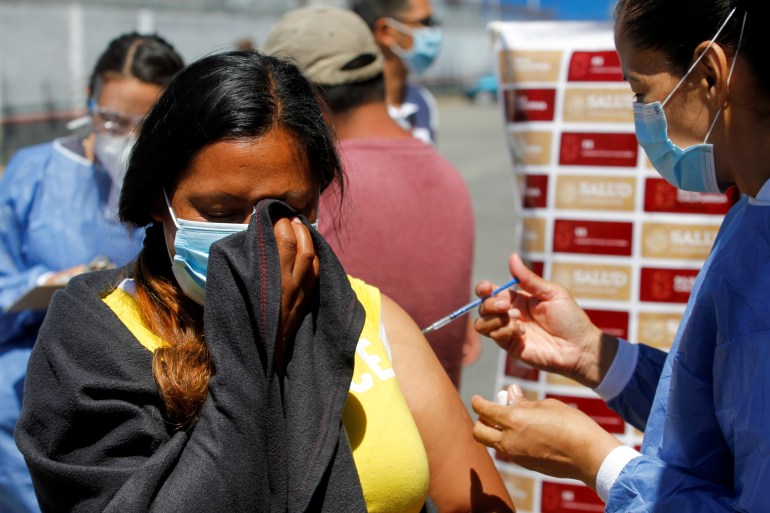Mexico sees rising COVID cases, especially in tourism hotspots
Mexican states of Quintana Roo and Baja California Sur, popular with tourists, are seeing higher numbers of infections.

COVID-19 infections are rising across Mexico, especially in two coastal states home to major tourism destinations that were busy during the holiday season.
Mexican government data shows that Quintana Roo, where tourists flock to Cancun, Tulum and other spots along the Mayan Riviera, and Baja California Sur, which draws beachgoers to the twin Pacific resorts that make up Los Cabos, are experiencing some of their highest infection totals since the start of the pandemic.
Keep reading
list of 4 itemsFear and loathing on the US-Mexico border
Mexico’s central bank to launch digital currency by 2024
US, Canada, Mexico leaders to meet in first summit since 2016
Baja California Sur saw 700 new infections on December 29, compared with a previous high in July of fewer than 600, while Quintana Roo went from 27 cases on December 20 to 484 eight days later, though that remained below its single-day high of 574 in August.
During the holidays, the waterfront and beaches in La Paz, the capital of Baja California Sur perched on the Sea of Cortez, were packed with tourists. Early in the pandemic, they had been closed.
Farther south in Los Cabos, hotels were at 75 percent of their capacity during the week of Christmas, according to Mexico’s tourism ministry.
Reporting from Mexico City, Al Jazeera’s Manuel Rapalo said some public health experts, along with average people, have questioned the country’s pandemic response in light of the recent rise in infections.
Mexico is one of the few countries that “does not require a negative COVID-19 test for tourists entering the country”, Rapalo said, a policy that has boosted visitor numbers but may be incurring public health costs.
“In December, January, tourism took off,” Isrrael Coto, manager of a hotel-restaurant in La Ventana, about 32km (20 miles) south of La Paz, told The Associated Press news agency. “People are tired of the confinement.”
School delayed
Mexico experienced its worst moments of the pandemic roughly a year ago, when hospitals were overwhelmed and test-confirmed, COVID-19 deaths were above 1,400 daily.
The country has recorded more than 3.99 million coronavirus cases since the pandemic began, according to data from Johns Hopkins University, as well as more than 299,580 deaths as a result of the virus. Authorities have said the real number of cases and deaths is likely significantly higher than the official tally, however.
“This new variant [Omicron] is very contagious, but fortunately it is not requiring hospitalisation, nor do we have cases of rising deaths,” President Andres Manuel Lopez Obrador said on Tuesday.
More than 57 percent of the population is now fully vaccinated, according to Johns Hopkins. Mexico has also started giving a third booster dose to vulnerable groups, including the elderly and health workers. Teachers will begin receiving the booster in the coming days.

Meanwhile, the increase in infections led a dozen of Mexico’s 32 states to delay the return to classes after the holidays. While many students returned to school on Monday, those other states, including Quintana Roo and Baja California Sur, delayed the start to January 17.
Major population centres including Mexico state, which contains many of the capital’s suburbs, as well as Guadalajara and Monterrey, are also seeing rising infections.
Local governments are also once again stepping up their testing efforts. In La Paz this week, long lines were visible outside COVID-19 testing centres.
Mexico has kept its borders open throughout the pandemic, though traffic at the shared border with the United States was limited to essential movements until November. Airports did require travellers to fill out a health form and many for a time were checking temperatures.